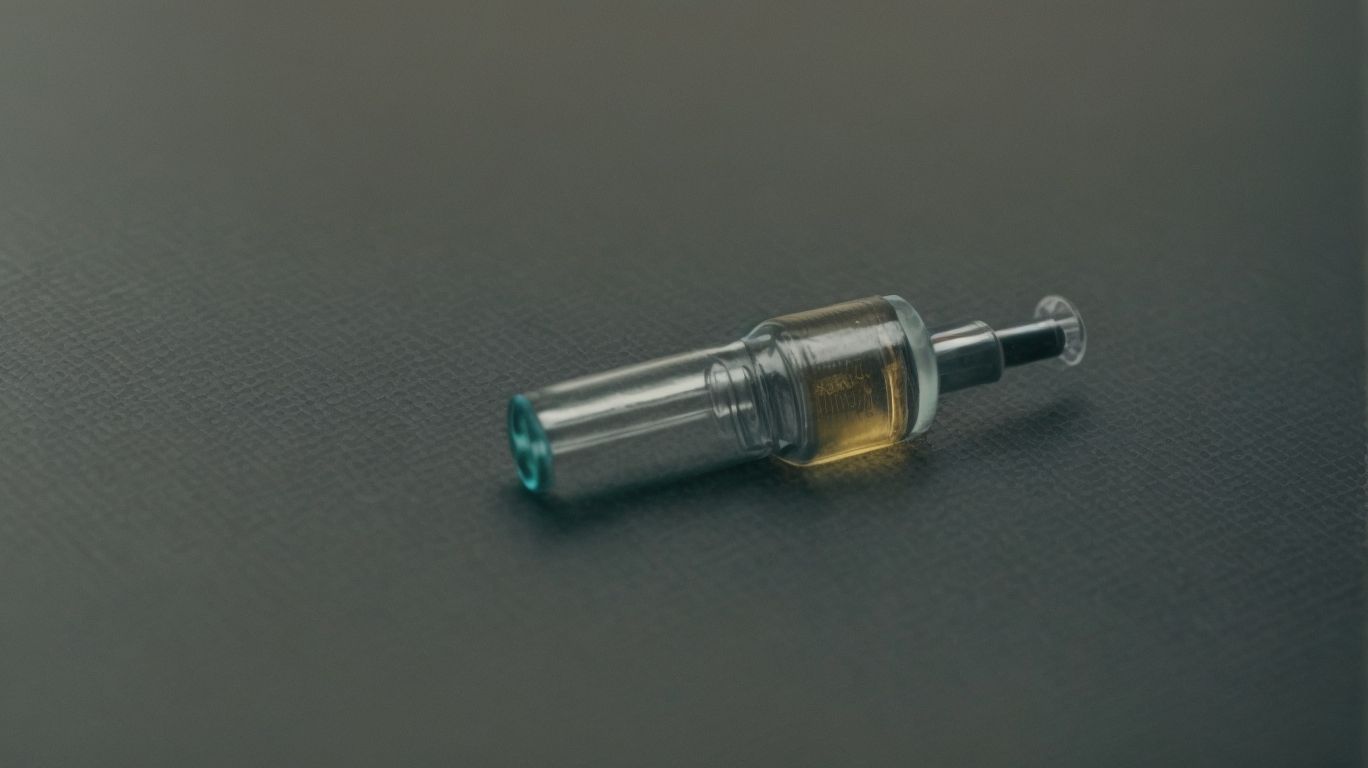Formaldehyde is a naturally occurring chemical compound made of hydrogen, oxygen, and carbon and is commonly used in various household products, including vaccines. However, concerns have been raised about the use of formaldehyde in vaccines, leading to controversy and confusion among individuals. In this article, we will separate fact from fiction and provide a comprehensive understanding of the truth about formaldehyde in vaccines.
What is formaldehyde?
Formaldehyde is a colorless and flammable gas with a strong smell that is used in various industrial and medical applications.
What are the uses of formaldehyde?
Formaldehyde has a wide range of uses, including as a disinfectant, preservative, and in the production of various household products, such as furniture and cosmetics.
What is the controversy surrounding formaldehyde in vaccines?
Many individuals have expressed concerns about the use of formaldehyde in vaccines, primarily due to its potential health risks. However, it is important to understand the facts about formaldehyde in vaccines to dispel any misinformation.
Is formaldehyde used in vaccines?
Yes, formaldehyde is used in some vaccines as a preservative to prevent bacterial and fungal contamination.
What is the purpose of formaldehyde in vaccines?
The use of formaldehyde in vaccines helps to prevent any potential contamination and ensures the safety and efficacy of the vaccine.
What are the facts about formaldehyde in vaccines?
The amount of formaldehyde in vaccines is extremely small, typically less than 0.02%, and is quickly broken down by the body’s natural enzymes.
How much formaldehyde is in vaccines?
The Food and Drug Administration (FDA) and the Centers for Disease Control and Prevention (CDC) have set specific safety standards for formaldehyde levels in vaccines, and all vaccines must adhere to these standards.
What are the potential risks of formaldehyde in vaccines?
There is no evidence to suggest that the small amount of formaldehyde in vaccines poses any significant health risks. In fact, the formaldehyde levels found in vaccines are much lower than the amount naturally produced in the human body.
Can formaldehyde cause cancer?
There is no evidence to suggest that the small amount of formaldehyde in vaccines can cause cancer. Research has shown that formaldehyde is only carcinogenic when it is inhaled in large amounts over a prolonged period of time, which is not the case with vaccines.
What are the benefits of formaldehyde in vaccines?
The use of formaldehyde in vaccines helps to prevent contamination and ensure the safety and efficacy of the vaccine. It is also a cost-effective and efficient preservative.
How does formaldehyde help in vaccine production?
Formaldehyde is used in the production of vaccines to inactivate viruses, making them safe for use in humans.
What are the alternatives to formaldehyde in vaccines?
Some vaccines may use alternative preservatives, such as 2-phenoxyethanol or thimerosal, but these may have their own potential risks and limitations.
In conclusion, formaldehyde is a commonly used preservative in vaccines that has been deemed safe by regulatory bodies and extensive research. The amount used is minuscule and poses no significant health risks. It plays a crucial role in ensuring the safety and effectiveness of vaccines, and alternative preservatives may not be as effective. The bottom line is that the use of formaldehyde in vaccines is necessary and has been proven to be safe.
Key Takeaways:
What Is Formaldehyde?

Photo Credits: Chemicalglossary.Net by Gabriel Lewis
Formaldehyde is a colorless gas with a strong, pungent smell. It is naturally produced in the human body as a part of normal metabolic processes, and it is also found in fruits, vegetables, and meats.
In vaccines, formaldehyde is used to inactivate viruses or bacteria, ensuring the vaccine’s safety and effectiveness. The small amount of formaldehyde present in vaccines poses no significant risk to our health as it quickly breaks down and is eliminated from the body. Therefore, while formaldehyde may sound concerning, it is an essential component in vaccine production.
What Are the Uses of Formaldehyde?

Photo Credits: Chemicalglossary.Net by Tyler Ramirez
Formaldehyde serves various purposes across multiple industries, including healthcare, manufacturing, and research. Its primary function is as a disinfectant and preservative in vaccines, ensuring their safety and effectiveness. Additionally, formaldehyde plays a crucial role in the production of plastics, textiles, and resins. It is also a key component in the manufacturing of building materials, such as plywood and furniture.
While formaldehyde is a naturally occurring substance in the environment and our bodies produce small amounts, it is important to understand its proper and regulated use in products. For more information, the CDC’s website offers comprehensive resources on the uses and safety of formaldehyde.
What Is the Controversy Surrounding Formaldehyde in Vaccines?

Photo Credits: Chemicalglossary.Net by Andrew Nguyen
The debate surrounding formaldehyde in vaccines arises from concerns about its safety and potential risks. Detractors argue that formaldehyde, a chemical commonly used in the production of certain vaccines, may be harmful when injected into the body. However, it is important to note that the quantity of formaldehyde present in vaccines is minimal and well within the safe limits set by regulatory agencies. Formaldehyde is utilized in vaccines to deactivate viruses and bacteria, ensuring the safety and efficacy of the vaccine. In fact, the human body naturally produces formaldehyde as part of its metabolic processes.
Is Formaldehyde Used in Vaccines?
Yes, formaldehyde is indeed utilized as a preservative in some vaccines. Its purpose is to prevent the growth of bacteria and fungi, ensuring the vaccine remains safe and effective. However, it is important to understand that the amount of formaldehyde used in vaccines is minimal and well within the safety limits set by regulatory authorities. The controversy surrounding formaldehyde in vaccines is largely unfounded and based on misinformation. Extensive research and scientific studies have consistently shown that formaldehyde in vaccines poses no significant health risks. Vaccines undergo thorough testing and are proven to be safe before they are approved for use.
What Is the Purpose of Formaldehyde in Vaccines?
The purpose of formaldehyde in vaccines is to neutralize or eliminate viruses and bacteria that are utilized in the manufacturing of vaccines. This is crucial in ensuring the safety and efficacy of the vaccine by preventing the live organisms from causing illness. Although formaldehyde is used in small quantities, it is necessary for maintaining the quality of the vaccine. It is important to understand that the amount of formaldehyde used in vaccines is minimal and adheres to the safety regulations set by governing bodies.
The advantages of incorporating formaldehyde in vaccines outweigh any potential risks.
What Are the Facts About Formaldehyde in Vaccines?

Photo Credits: Chemicalglossary.Net by Ryan Hernandez
Formaldehyde is utilized in vaccines for the purpose of deactivating toxins and viruses, ensuring their safety and effectiveness. The quantity of formaldehyde found in vaccines is minimal, with the majority containing less than 1% of the amount naturally produced by our bodies on a daily basis. Extensive research has shown that this small amount of formaldehyde poses no significant health risks.
It is imperative to have a clear understanding of the facts regarding formaldehyde in vaccines and not be misled by false information. When it comes to vaccination, it is crucial to rely on reliable sources and seek guidance from healthcare professionals for accurate information and advice. Stay well-informed and prioritize the well-being of both yourself and others.
How Much Formaldehyde Is in Vaccines?
Formaldehyde is utilized in vaccines to neutralize toxins and eliminate viruses or bacteria, ensuring their safety and effectiveness. Here is a step-by-step guide to understanding the amount of formaldehyde present in vaccines:
- Formaldehyde content: Vaccines may contain trace amounts of formaldehyde, typically less than 0.02%. This is significantly lower than the amount naturally produced in the human body.
- Safety standards: The FDA and other regulatory bodies have established strict limits on formaldehyde in vaccines, ensuring it remains well below levels that could cause harm.
- Risk assessment: Numerous studies have concluded that the quantity of formaldehyde in vaccines poses no significant health risks, including cancer.
- Benefit of formaldehyde: Formaldehyde plays a crucial role in vaccine production by effectively neutralizing pathogens, allowing for safe immunization.
- Alternative preservatives: Some vaccines use alternative preservatives, but these may have their own limitations and safety considerations.
What Are the Safety Standards for Formaldehyde in Vaccines?
The safety standards for formaldehyde in vaccines are carefully regulated and closely monitored by the FDA. According to these standards, the amount of formaldehyde in vaccines must not exceed 0.02% by weight. This limit is set to ensure that the formaldehyde levels in vaccines are well below any potential harm to human health. Extensive testing and research have been conducted to establish these safety standards, and strict quality control measures are in place to ensure that vaccines comply with them.
What Are the Potential Risks of Formaldehyde in Vaccines?

Photo Credits: Chemicalglossary.Net by Austin Hall
Formaldehyde is a necessary component in vaccines as it effectively deactivates viruses and toxins, ensuring their safety and effectiveness. However, there may be potential risks associated with its use in vaccines. These risks may include mild local reactions at the injection site, such as redness or swelling, and minor systemic reactions like fever or headache. While serious allergic reactions are rare, it is important to note that the amount of formaldehyde in vaccines is minimal and well within safe limits. The benefits of vaccination, such as preventing diseases and saving lives, far outweigh the potential risks. If you have any concerns, it is recommended to consult with a healthcare professional to make an informed decision.
Can Formaldehyde Cause Cancer?
Formaldehyde has been a topic of concern due to its potential link to cancer. However, scientific studies have shown that the small amount of formaldehyde present in vaccines does not pose a significant risk. The body naturally produces formaldehyde as part of its metabolic processes, and the levels found in vaccines are much lower than those encountered in daily life. Formaldehyde in vaccines serves a crucial purpose of inactivating viruses, ensuring vaccine safety. The benefits of vaccines in preventing deadly diseases outweigh the minimal risk associated with formaldehyde. Therefore, the question “Can Formaldehyde Cause Cancer?” can be answered by stating that the amount found in vaccines is unlikely to cause cancer.
Can Formaldehyde Cause Other Health Issues?
Formaldehyde in vaccines has been a topic of debate, with concerns raised about its potential impact on health. Some studies suggest that exposure to high levels of formaldehyde may lead to respiratory and immune system problems. However, the amount of formaldehyde present in vaccines is very low and falls within the safety standards set by regulatory agencies. The small quantities of formaldehyde used in vaccines are necessary to neutralize toxins and prevent bacterial or viral contamination. It is important to note that the advantages of vaccines, such as preventing serious diseases and saving lives, far outweigh any potential risks.
Fact: Vaccines have been extensively researched and proven to be safe and effective in preventing diseases.
What Are the Benefits of Formaldehyde in Vaccines?

Photo Credits: Chemicalglossary.Net by Jonathan Rivera
The advantages of incorporating formaldehyde into vaccines include its ability to inactivate viruses and toxins, thereby reducing the risk of infection. Formaldehyde is utilized to neutralize or deactivate the virus or bacteria present in the vaccine, making it suitable for administration. Additionally, it aids in stabilizing the vaccine and prolonging its shelf life. The quantity of formaldehyde used in vaccines is minimal and falls well within the safe limits set by regulatory agencies.
Before being authorized for use, vaccines undergo thorough testing to guarantee their safety and efficacy.
How Does Formaldehyde Help in Vaccine Production?
Formaldehyde plays a crucial role in the production of vaccines by ensuring their safety and efficacy. Here are the steps in which formaldehyde aids in vaccine production:
- Inactivation: Formaldehyde is utilized to inactivate or kill the virus or bacteria used as the antigen in the vaccine, preventing them from causing disease in the recipient.
- Stabilization: Formaldehyde acts as a stabilizer, preserving the antigen’s effectiveness in the vaccine over time.
- Contamination control: Formaldehyde helps prevent bacterial or fungal contamination during the manufacturing process of the vaccine.
- Quality control: Formaldehyde is used to test the potency and safety of vaccines during production.
What Are the Benefits of Using Formaldehyde in Vaccines?
The use of formaldehyde in vaccines offers several benefits that contribute to their safety and effectiveness.
- Inactivation of viruses: Formaldehyde is utilized to inactivate or kill viruses in vaccines, ensuring that they cannot cause disease when administered.
- Preservation: Formaldehyde plays a crucial role in preserving vaccines by preventing bacterial and fungal growth. This extends the shelf life of vaccines, making them more widely available.
- Quality control: Formaldehyde is a vital tool in vaccine production, ensuring consistent potency and efficacy. It helps maintain the vaccine’s integrity during manufacturing, storage, and transportation.
- Immunogenicity: By altering the structure of proteins, formaldehyde aids in stimulating a strong immune response. This enhances the vaccine’s ability to generate protective immunity against specific diseases.
Pro-tip: While formaldehyde is necessary for vaccine production, it is important to note that the amount used is strictly regulated and kept well below levels that could be harmful to individuals.
What Are the Alternatives to Formaldehyde in Vaccines?

Photo Credits: Chemicalglossary.Net by Vincent Lopez
When it comes to vaccines, formaldehyde is commonly used as a preservative. However, for those who have concerns about its use, there are alternatives available. Some vaccines use thimerosal, a mercury-containing compound, as a preservative. Others use 2-phenoxyethanol or phenol, which have been extensively studied and deemed safe by regulatory agencies. Ultimately, the choice of preservative depends on the specific vaccine and its formulation. It’s important to consult with healthcare professionals and consider the benefits and risks before making a decision about vaccination.
What Are the Pros and Cons of Using Alternative Preservatives?
When considering the use of alternative preservatives in vaccines, there are both advantages and disadvantages to take into account.
Pros:
- Reduced toxicity: Alternative preservatives, such as thimerosal, have a lower toxicity profile compared to formaldehyde, which is used in some vaccines.
- Lower risk of allergic reactions: For individuals who may be allergic to formaldehyde, using alternative preservatives can minimize the risk of allergic responses.
- Public perception: Addressing concerns about formaldehyde in vaccines by using alternative preservatives can improve public confidence in the safety of vaccines.
Cons:
- Efficacy and stability: Alternative preservatives may not be as effective in preventing microbial growth and maintaining vaccine stability as formaldehyde.
- Regulatory approval: The use of alternative preservatives may require additional testing and regulatory approval, which can add time and cost to the vaccine development process.
- Limited research: There may be limited data available on the long-term safety and effectiveness of alternative preservatives in vaccines.
It is important to consider these pros and cons when evaluating the use of alternative preservatives in vaccines.
Frequently Asked Questions
1. What is the role of healthcare workers in influencing vaccine decisions?
Healthcare workers, especially those in primary care, play a crucial role in influencing vaccine decisions. They need to be knowledgeable about the safety data and feel empowered to give evidence-based advice in order to counteract false information and convince hesitant populations.
2. How does vaccine hesitancy affect global health?
Vaccine hesitancy is a major global health threat, according to the World Health Organization. It has led to outbreaks of communicable infections, such as measles, and poses a risk to the health and well-being of individuals and communities.
3. What are some common concerns about vaccine safety?
Some common concerns about vaccine safety include fears about adjuvants, preservatives, inactivating agents, manufacturing residuals, and the number of vaccines. There are also fears about potential side effects, such as autism, diabetes, developmental delays, hyperactivity, and attention-deficit disorders.
4. Is there scientific evidence that refutes these concerns?
Yes, there is a large body of scientific evidence that refutes these concerns. Despite some strongly held beliefs, vaccines have been extensively studied and proven to be safe and effective. They are one of the greatest public health achievements and have saved millions of lives.
5. What are some factors that contribute to vaccine refusal?
Vaccine refusal can be influenced by various factors, including lack of trust in vaccine safety, misinformation spread by organized anti-vaccine groups, social media, and celebrity endorsements. Additionally, in high-income settings, many people do not have first-hand experience of the devastating consequences of preventable diseases.
6. How can healthcare workers help educate and inform hesitant populations about vaccine safety?
Front-line healthcare workers need to have access to trusted, evidence-based information on vaccines and be well-equipped to have informed discussions with hesitant populations. Provider recommendation strongly influences vaccine decision making, and it is important for healthcare workers to provide strong advice based on scientific data and cultural context.
